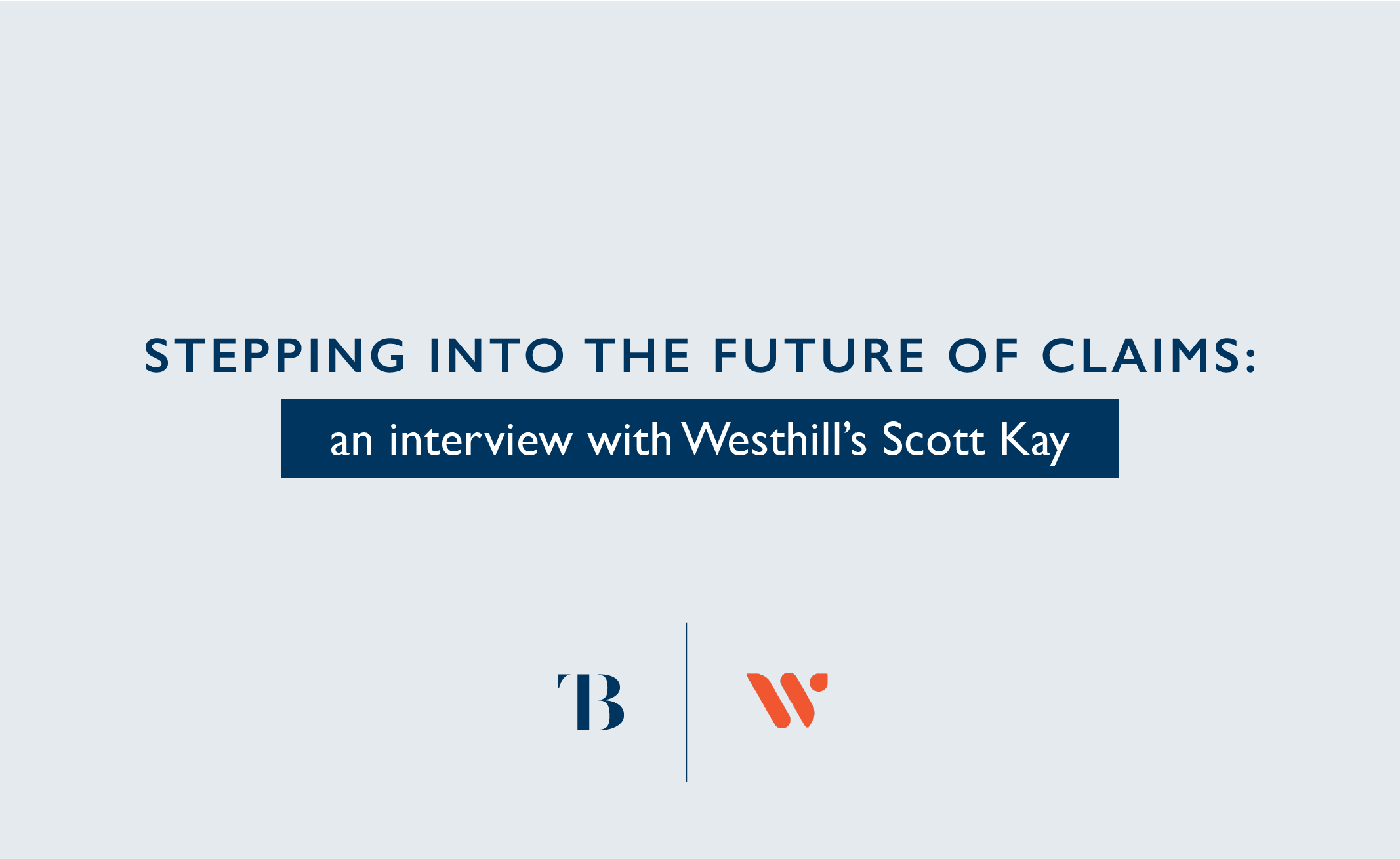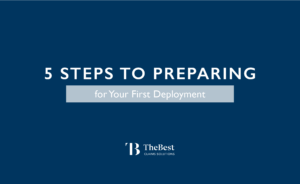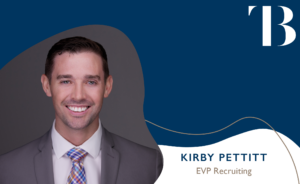Growing and scaling a business requires thoughtful strategic moves and continued innovation. As we expanded into new territory, we needed strong partnerships to boost our tech sector presence. It made sense to collaborate with the team at Westhill, a breakthrough technology solution for carriers and their policyholders.
About Westhill
Westhill provides digital solutions for the property casualty (P&C) insurance industry, focused on delivering an exceptional customer experience. Westhill leverages smart technology to connect carriers, contractors, and policyholders digitally to remove inefficiencies from the repair process.
Advocates in the power of connection, Westhill believes all successful experiences need a foundation grounded in transparency and shared value, principles that are woven throughout each facet of Westhill’s business model.
Introduction to Industry Evolution
In your view, what are the key challenges and issues that the claims industry is currently facing?
I believe that one of the key challenges is finding ways to adapt to increasing consumer expectations around what is a world-class experience. I think experiences that consumers have in one part of their lives are crossing over into what they expect from their insurance providers. Consumers want processes to be faster, to be digital, and they want concierge-style services after a loss to help them get their lives and homes back to normal, not just a cash settlement.
“There’s a lot more work to be done in the homeowner space. Technology will be critical not only in helping to resolve the claims process, but to extend support through the restoration experience to align consumer and carrier on the definition of the “finish line”.”
Can you elaborate on how technology is becoming an integral part of the claims industry, and what impact do you foresee it having on the overall landscape?
I think that many carriers have done a great job of creating digital experiences, for example, in the automotive space, creating, “that was easy” type reactions from their customers. There’s a lot more work to be done in the homeowner space. Technology will be critical not only in helping to resolve the claims process, but to extend support through the restoration experience to align consumers and carriers on the definition of the “finish line”. In the MRP space, technology is also a critical component in the “back office” functions of communicating and managing relationships with contractors. Good contractors are busier, and more scarce than ever, and have lots of options. If we want them to participate in the insurance space, we must find ways to make things easier for them too.
Spotlight on Westhill
Tell us about Westhill – what inspires the company, what impact are you seeing or hoping to see in the industry?
Westhill was built to help homeowners through the very difficult time of having a loss to their home. To do that, our goal is to make things easier for them, to make the path back to normal, abnormally easy. To accomplish that goal, we also need to make things easier for our contractor partners, and beneficial to our carrier clients. On that side of our business model, we like to say that we are here to make managed repair more manageable.
“We like to say that we are here to make managed repair more manageable.”
What sets Westhill apart and how has the company’s unique approach contributed to the evolving claims landscape?
When our new leadership team came on board in 2020, one of the things that struck us was that even with the incredible value proposition represented by managed repair, only 15% of annual claims participate in an MRP program. When we looked to understand why, and what would need to be done to improve that number and deliver MRP to more homeowners, we found 4 key things that were preventing MRP from scaling. Those 4 things were:
- Capacity of existing MRP contractor networks
- Consistency of service within MRP programs, particularly when contractors were called upon to provide services typically handled by claims professionals
- Conflicting outcomes – specifically increased indemnity in traditional MRP models
- Technology and the lack thereof
As a result, everything that we have done to build and scale Westhill has revolved around addressing those 4 issues. We have now built the largest, differentiated contractor network within MRP, including an exclusive relationship with Lowe’s. We have built innovative workflows where not all MRP must be contractor-led by default. We have built industry best practices resulting in indemnity spend being at par with non-MRP claims in our delivery model, and we have successfully deployed technology that connects homeowners, contractors, carriers, and Westhill’s customer experience team.
Could you share specific examples of how Westhill has successfully addressed challenges within the industry, providing innovative solutions to previously identified problems?
I would reference two things. With every carrier engagement, we begin with two things. First, we use sophisticated models to map and overlay carrier claims history and PIF with our contractor network coverage, and then use those results not only to understand current coverage but to direct ongoing network development to ensure both coverage and capacity requirements. Second, we use a Lean Six Sigma process called value stream mapping to understand a carrier’s current claims workflow, identify targets and opportunities for improvement, and then collaborate to develop new targeted processes that are supported by our technology and contractor network. It is the opposite of the one-size-fits-all approach that has been common in this space, and results in better adoption and results within our carrier programs.
The Power of Partnership
From your perspective, why does a partnership between TheBest Claims and Westhill make perfect sense, and what synergies exist between the two companies?
First of all, our partnership with TheBest Claims has been just tremendous from day one and started almost immediately when our new management team started. TheBest Claims has tremendous reach in terms of relationships within their existing client base, and knowledge within the space. I think the vision very early on has been that Westhill and our MRP services are a perfect hand-in-glove solution to extend the services a carrier can offer past claims resolution, to full property restoration for residential or commercial claims. Also, with TheBest Claims having an unmatched ability to recruit and extend human capital to expand capacity for carriers in a time of need, that combination offers a solution for carriers to help their insured that we think is unmatched.
Emphasizing the collaboration between TheBest Claims and Westhill, can you share success stories resulting from our partnership?
Absolutely. Recently, we worked together with one large enterprise carrier that wanted to implement a contractor-led model that would increase service to policyholders, and reduce LAE, but not increase indemnity. To that end, we worked closely with TheBest Claims to set up a process and teams that supported claims from FNOL, to qualification and coordination through a team of desk adjusters managed by TheBest Claims, connected to a Direct Repair Program (DRP) with some of Westhill’s top contractors. The process also included resources for a best practice third-party quality review of contractor estimates before they were submitted to the desk. The results were tremendous, with increased customer satisfaction, substantial LAE savings, and indemnity spend that was on par, and in some cases better than non-MRP claims that went to cash settlement.
Peek into the Future
Looking ahead, what upcoming trends do you foresee in the claims industry, especially in terms of technological advancements? How is Westhill keeping pace with these changes?
Digital is not only here to stay, but also becoming the DeFacto expectation of consumers. At Westhill, we are constantly improving our delivery model to improve the experience for policyholders, contractors, and carriers. Today, that means finding and dispatching the best contractors for restoration faster than our competitors can. In the future, this will extend to providing homeowners options for virtual inspections and even virtual design services for restoration and renovations without them having to leave their house, or even having a contractor visit their home until installation.
What does Westhill envision for the future, and how does our partnership factor into that vision?
I think some of that I may have referenced in the question above, but I would also add to that one of the key things that we continue to focus on is how to continually expand and improve our contractor network to meet both the capacity and quality demands of our clients. There are still large numbers of tremendously qualified contractors that have stayed on the sidelines of insurance work and MRP because of how complicated it can be. One of the things that we are working on in our partnership with TheBest Claims is how we can develop “universal adaptor kits” that enable great contractors to focus they want – bid and build while supporting them with services that enable and allow them to meet carrier and insurance requirements without being disruptive to their current businesses.
What are the long-term goals and plans for both TheBest Claims and Westhill, particularly in the context of their joint efforts to shape the future of the claims industry through technology?
I think that everything that we are doing in the partnership between TheBest Claims and Westhill is focused on how we can improve the experience for the homeowner, and also find efficiency for our carrier partners. Currently, most of that focus is pointed at the claims process. However, we have also recently launched a new service set called Westhill360 that can help carriers engage and assist their policyholders throughout the entire homeownership lifecycle, starting at new policy inception and continuing throughout the renewal cycle. When viewed through that lens, we can help customers who access our technology, contractor network, and affinity benefits not only recover from a loss, but to improve, maintain, or repair their new home, or the one that they already live in to increase its value and hopefully prevent future losses and claims.



